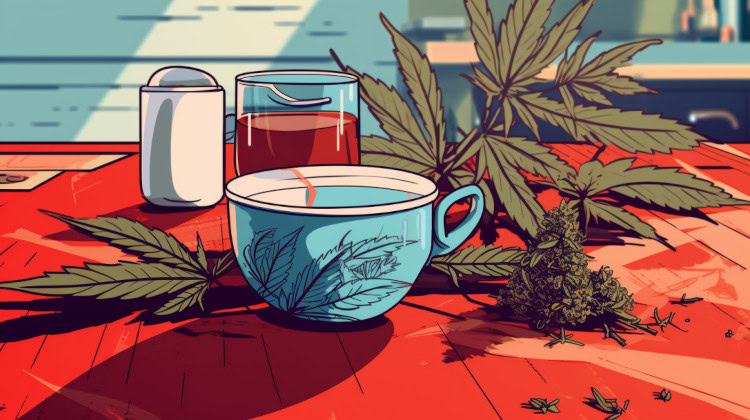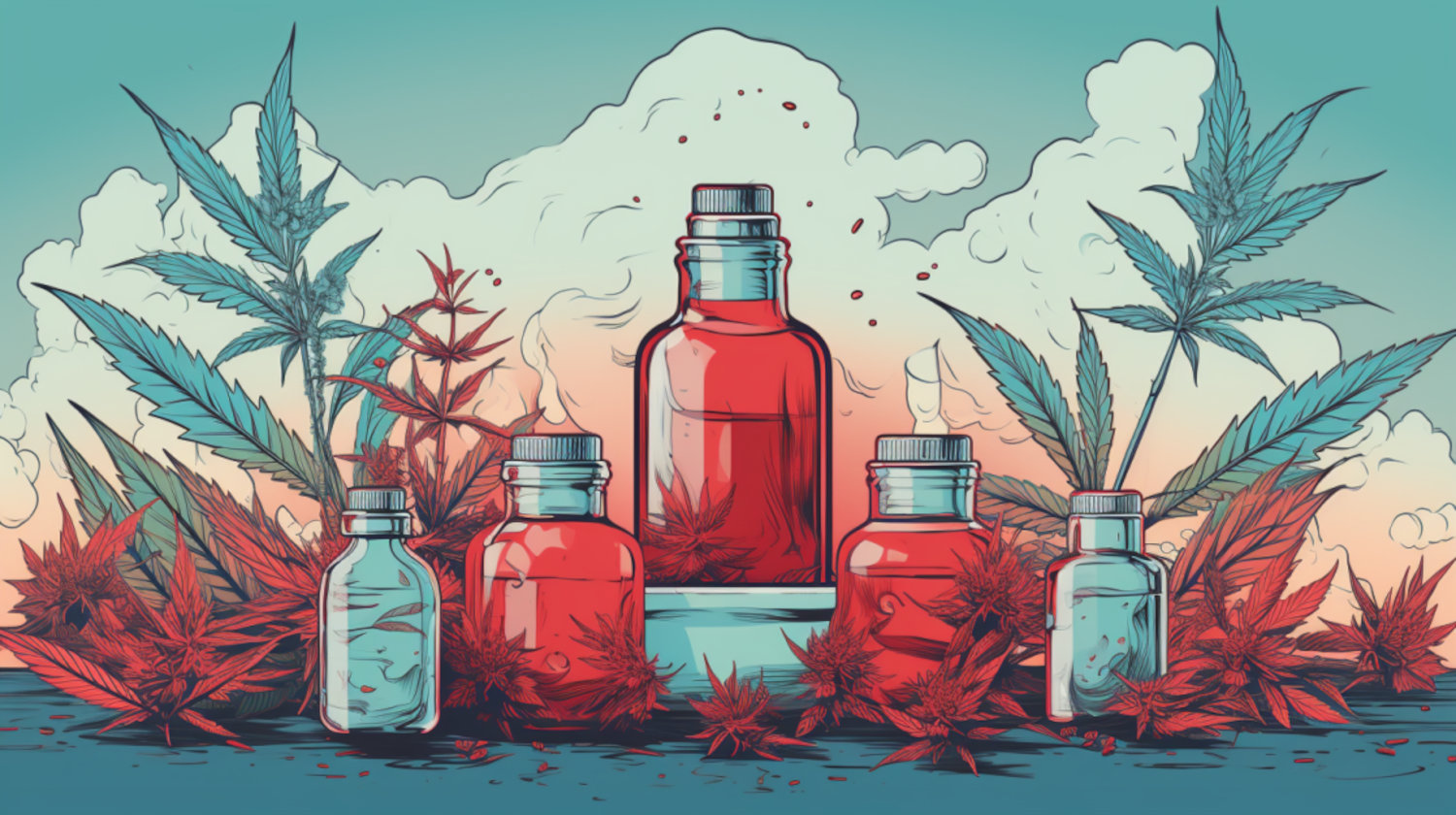In This Article
- What is a CBD Tincture?
- What is CBD Oil?
- Key Differences Between CBD Oil and Tinctures
- Base Ingredient
- Extraction Method
- Taste
- Use
- Which One Should You Choose?
- How to Use CBD Oils and Tinctures
- CBD Oil and Tincture FAQs
- Is CBD Tincture Better than Oil?
- What is CBD Tincture Best for?
- What are the Cons of CBD Tincture?
- How Fast Does CBD Tincture Kick in?
- How Long Do CBD Tinctures and Oils Last?
- References
Key Takeaways
- CBD tinctures are fast-acting, alcohol-based extracts designed to be placed under the tongue for quick absorption.
- CBD oil, made with carrier oils for better absorption, has a mild taste and can be used in food, placed under the tongue, or applied to the skin.
- Always choose high-quality, lab-tested CBD products for safety and effectiveness.
You’ve probably heard a lot about cannabidiol (CBD) tinctures and oils, two of the most popular options for CBD users.1 But what’s the difference between them? Which one is the best fit for specific needs compared to the other?
The terms are often used interchangeably, but to understand CBD tincture vs oil, you need to dig in to the details.
Whether looking to ease some stress, manage pain, or get better sleep, we’re here to break down the specifics of CBD tinctures and oils to help you figure out which one suits your lifestyle best.2
What is a CBD Tincture?
A CBD tincture is a liquid extract made by steeping cannabis flower in high-proof alcohol. This extraction method is one of the oldest and most effective for preserving active cannabinoids, such as CBD, and other beneficial plant compounds.
After the plant matter is steeped in alcohol, the mixture is strained and sometimes mixed with natural flavors, sweeteners, and food-grade essential oils to improve taste due to the natural bitterness of the alcohol.
CBD tinctures are taken sublingually—under the tongue—to allow faster absorption into the bloodstream. Their alcohol base promotes a quick onset of effects. Additionally, their dropper bottles make it easy to control and adjust dosages according to personal needs.
What is CBD Oil?

CBD oil is a natural extract from the hemp plant, derived from the flowers, leaves, and stalks. It’s produced using methods like CO2 or ethanol extraction, which pulls CBD and other therapeutic compounds like terpenes and flavonoids from the plant without harsh chemicals.¹
Once extracted, CBD is combined with a carrier oil, such as hemp seed or MCT oil. This mixture helps dilute the concentrate and improves the taste.
You can use CBD oil in several ways. Place it under your tongue for quick absorption, mix it into your favorite food or drink, or apply it directly to your skin. CBD oil is preferred by those who want the benefits of CBD without the strong taste or alcohol content found in tinctures.
Key Differences Between CBD Oil and Tinctures
Choosing between a CBD tincture and CBD oil depends on several factors. Here’s a breakdown to help you decide which suits your needs better.
Base Ingredient
CBD tinctures are made with high-proof alcohol as an extraction solvent and a base, which allows them to absorb more quickly under the tongue.
CBD oil uses carrier oils like coconut, hemp seed, or MCT oil. The choice of carrier oil can improve the overall nutritional value of CBD oil and make it more versatile, from ingestion to topical application.
Extraction Method
Tinctures are usually created using an alcohol extraction method. This traditional approach effectively extracts various compounds from the plant, including cannabinoids and terpenes. However, it can leave a strong taste because the alcohol also extracts chlorophyll, which adds bitterness.
CBD oils are most commonly made by directly infusing MCT oil. However, they can also be produced using CO2 extraction methods and blended with MCT or another carrier oil.
Prefer to customize your product? You can make CBD oils and tinctures at home.
Taste
Tinctures may be slightly bitter because of their alcohol content, often offset by added flavors. In contrast, CBD oils generally have a milder, more natural taste, influenced by the carrier oil used. For example, hemp seed oil can have a nutty, somewhat earthy flavor, while coconut-derived MCT oil has a slightly sweeter, lighter taste.
Use
Tinctures are ideal for quick use under the tongue, while oils can be used more flexibly. Depending on what is most convenient and enjoyable, you can add them to your meals, under your tongue, or even on your skin.
Which One Should You Choose?

Choosing between CBD tincture and CBD oil depends on your needs and preferences.
If you're not a fan of strong flavors or want to avoid alcohol, CBD oil is the best bet. It's milder and blends easily into foods and drinks without notably altering the taste.
Consider a tincture if you can tolerate bitterness or need something that acts quickly. Many tinctures are flavored to help mask the taste of alcohol.
How to Use CBD Oils and Tinctures

To get the most out of a CBD tincture:
- Start with a few drops using the dropper. If you’re new to tinctures, it’s best to start small and see how your body reacts.
- Drop the CBD tincture under your tongue and hold it there for about a minute. This method bypasses the digestive system, quickly getting CBD into your bloodstream.
- After waiting, swallow the tincture. If the taste is too strong, you can wash it down with a bit of water or your favorite beverage.
- Pay attention to how you feel and adjust your dose if necessary. Everyone’s body responds differently, so what works for others might need tweaking for you.
Whether new to CBD or a seasoned pro, CBD oil is easy to use in several ways.
- Like tinctures, oil can be used sublingually for fast absorption. Measure your dose, drop it under your tongue, hold it there for about a minute, and then swallow.
- If you dislike the taste, you can easily incorporate CBD into your daily routine by mixing the oil into your morning smoothie, coffee, or dinner recipes.
- Some oils can be used topically. Apply them directly to the skin where you feel muscle tension or discomfort. This method is more suitable for localized relief.
Try both to see which suits your lifestyle and wellness goals the best. There’s no one-size-fits-all with CBD. What works best for you depends on your health needs and everyday routine.
CBD Oil and Tincture FAQs
Is CBD Tincture Better than Oil?
Whether a CBD tincture is better than oil depends on personal preference. Due to their alcohol base, tinctures can be absorbed more quickly when taken sublingually, which may be helpful for those needing fast relief. However, CBD oil is versatile and generally has a milder taste, making it suitable for various uses, and it still absorbs relatively quickly.
What is CBD Tincture Best for?
CBD tincture is best for those seeking quick effects and precise dosage. The alcohol base allows for quick absorption into the bloodstream when administered sublingually. It may be ideal for managing conditions such as anxiety or sudden pain flare-ups.
What are the Cons of CBD Tincture?
The main downsides of CBD tinctures are the taste and the presence of alcohol. Tinctures can have a bitter flavor, which might be off-putting to some users. Additionally, because they are alcohol-based, they may not be suitable for everyone, particularly those avoiding alcohol for health or personal reasons.
How Fast Does CBD Tincture Kick in?
CBD tincture typically kicks in quickly when taken sublingually. Effects can be felt within 15 to 30 minutes because the CBD is absorbed directly into the bloodstream through the mucous membranes in the mouth. This makes tinctures a great option for fast relief. Effects can last six to eight hours.3
How Long Do CBD Tinctures and Oils Last?
CBD tinctures and oils usually last about one to two years if you store them properly. Keep them in a cool, dark spot, and seal the lid tightly. Over time, CBD may lose potency, so it’s best to replace the product if it’s been stored for a while and doesn’t seem as effective.
References
- Spindle TR, Bonn-Miller MO, Vandrey R. Changing Landscape of cannabis: Novel products, formulations, and Methods of Administration. Current Opinion in Psychology. 2019;30:98-102. doi:https://doi.org/10.1016/j.copsyc.2019.04.002
↩︎ - Li J, Carvajal R, Bruner L, Kaminski NE. The Current Understanding of the benefits, safety, and Regulation of Cannabidiol in Consumer Products. Food and Chemical Toxicology. 2021;157:112600. doi:https://doi.org/10.1016/j.fct.2021.112600
↩︎ - MacCallum CA, Russo EB. Practical considerations in medical cannabis administration and dosing. European Journal of Internal Medicine. 2018;49(49):12-19. doi:https://doi.org/10.1016/j.ejim.2018.01.004
↩︎
The information in this article and any included images or charts are for educational purposes only. This information is neither a substitute for, nor does it replace, professional legal advice or medical advice, diagnosis, or treatment. If you have any concerns or questions about laws, regulations, or your health, you should always consult with an attorney, physician or other licensed professional.




